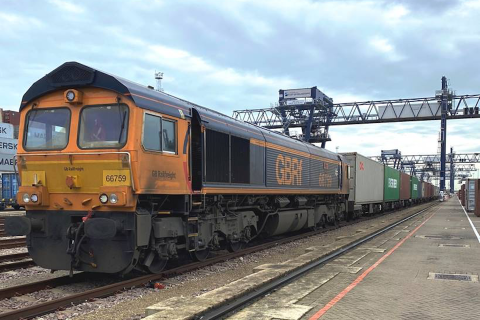Corona crisis led to 5% less rail freight in the Netherlands last year
Rail freight traffic to, from, within and through the Netherlands decreased by about five per cent in 2020. The main explanation for this is the corona crisis. The year a strong decline due to corona in the second quarter, after a relatively good first quarter. A strong recovery is visible in the last quarter. These figures were presented by ProRail, the infrastructure manager of the Dutch railways, in its annual report.
The 5 per cent refers to the tonne-kilometres, or the volume in tonnes moved per 1 kilometre. In 2020 this amounted to 13.6 billion tonne/kilometres. The Harbour Line accounted for 2.1 billion tonne-kilometers, (a decrease of 7 per cent), the Betuwe Line for 4.1 billion tonne-kilometers, (a decrease of 3 per cent) and the
combined network for 7.4 billion tonne-kilometers (a decrease of 5 per cent).

Some highlights
Interestingly, October was the busiest month ever measured in terms of the number of trains on the Dutch-German border. Moreover, when counting the number of container trains the figures of 2020 exceeded those of 2019. Only in May and April fewer container shuttles ran to and from the Netherlands. The losses were mainly in bulk transport.
ProRail is generally positive about the figures. “Rail freight has thus proven to be a ‘corona-proof’ mode of transport. Countries closed borders to road traffic or introduced stricter controls. This led to long traffic jams for road transport, while freight trains ran from one country to another without any significant delay. During the lockdown in several countries, there was also enough room for freight trains on the track. This was a consequence of the decrease in the number of passenger trains”, the infra manager said.
Car production to a standstill
A main contributing factor to the declining volumes is the impact of the pandemic on the automotive industry.
At the end of March 2020, the Netherlands had its first lockdown. Factories closed and production halted. This had significant consequences for rail freight transport. There were fewer trains, because there were no cars and parts to transport. Compared to 2019, 17 percent fewer trains were running in the automotive segment.
The standstill of car production was also immediately noticeable in other transport segments. Steel is needed for car production, so the demand for it also declined. The logical consequence was that the demand for raw materials and auxiliary materials for making steel fell.
As a result, the industry in Germany produced less and therefore less energy was used. Germany was able to meet the remaining demand with renewable energy and temporarily shut down the coal-fired power stations. As a result, there were temporarily no coal trains. The recovery in this segment became visible after the restart of the car manufacturing industry at the end of the second quarter.
Construction work
Apart from the corona crisis, construction work has also played a role. In 2020, the railway network faced more line closures due to construction work. Work was again carried out on the Third Track Zevenaar –
Oberhausen, on a total of 104 days, 20 of which no train traffic at all was possible. Unlike other years, this was on working days. By way of comparison, in 2019 a total of 128 days was spent on construction of the Third Track,
with 14 days of complete closure.
The result of these works was a shift in traffic from the Betuwe Line to the mixed network, especially the Brabant route (via Venlo) and the Bentheim route (via Oldenzaal). This in turn led to more traffic at the border crossings Venlo and Oldenzaal and the routes to these border crossings.
Annual report of freight transport
For ten years now, ProRail has published an annual report on rail freight transport. This report describes the general development of the volume of freight transport by rail. It indicates the figures where possible, but the report does not contain extensive analyses. The full report can be found here.
You just read one of our premium articles free of charge
Want full access? Take advantage of our exclusive offer





